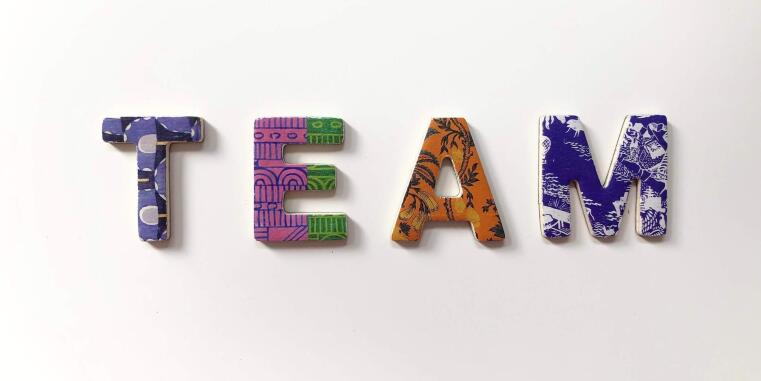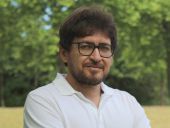








During the final week of the spring semester in 2024, we organized a summer school titled “Recent Topics in Materials Research” at the Institute of Materials Physics. The event featured ten comprehensive lectures, each followed by time for questions and discussions, delivered by ten experts in materials physics from AG Wilde. Alongside participants joining via Zoom, we were delighted to welcome ten international undergraduate students from Nanjing, China, who attended in person. The opportunity for face-to-face interaction provided these young scientists with a more immersive experience in materials research at the Institute of Materials Physics, University of Muenster. We are pleased to facilitate such events, as they promote an open and international research culture, which we believe is essential for advancing timely science and research.

Zwei Nachwuchswissenschaftler der Universität Münster nahmen an der 73. Lindauer Nobelpreisträgertagung teil Wie wahrscheinlich war und ist es wohl, einer oder einem der 970 Nobelpreisträgerinnen und -trägern zu begegnen, die die begehrte Auszeichnung seit der Erstverleihung im Jahr 1901 bekommen haben? Es ist natürlich äußerst unwahrscheinlich. Denn derzeit leben rund acht Milliarden Menschen auf der Erde, hinzukommen weitere Milliarden, die seit 1900 geboren wurden und inzwischen verstorben sind. Wer seine Chancen erhöhen will, in die Nähe eines Preisträgers oder einer Preisträgerin zu kommen, sollte folgenden Tipp beherzigen: Besuchen Sie im Frühsommer die Bodenseestadt Lindau, genauer gesagt das Nordufer der nur einen halben Quadratkilometer kleinen Insel der Stadt. Dort, in der Inselhalle, treffen sich anlässlich der Lindauer Nobelpreisträgertagung seit 1951 jährlich Dutzende Koryphäen ihres Fachs und tummeln sich gemeinsam mit Hunderten Nachwuchswissenschaftlerinnen und -wissenschaftlern fast eine Woche lang in der etwa 27.000 Einwohner großen Stadt.
Vor wenigen Wochen war es wieder so weit: Der exklusive Tagungskreis fand sich in Lindau ein und die Stadt wurde nach Stockholm zum Epizentrum der Nobelpreisträger – fast 40 von ihnen und mehr als 630 Nachwuchswissenschaftler aus 90 Ländern kamen zusammen, um über die Physik zu reden. Dabei mitmischen durfte auch die Universität Münster, und das in zweierlei Hinsicht: Zum einen gehörten Dr. Mohan M. Garlapati und Dr. Matthias Weiß zum Kreis der eingeladenen und damit ausgezeichneten Wissenschaftstalente. Zum anderen gehörte der Alumnus der Universität Münster und spätere Physiknobelpreisträger (1987), Dr. J. Georg Bednorz, zu den namensgebenden Ehrengästen der Tagung.
Der ganze Artikel ist hier zu finden.

Assoc. Prof. Dr. Farzad Khodabakhshi has successfully applied for a Marie Skłodowska-Curie fellowship financed by the European Commission (EC) and will work together with Prof. Gerhard Wilde as scientific host. The Marie Skłodowska-Curie Actions of EC promote excellence in research to help build Europe’s capacity for research and innovation by investing in the long-term careers of excellent researchers. Within this highly competitive program, Farzad has secured funding for investigating “Sustainable Hydrogen Storage by Advanced Layered Magnesium‐based Nanostructured Alloys”. With this project, the collaboration between our group and Farzad that started with a highly prestigious Alexander von Humboldt-fellowship for senior scientists and was later on supported by the International Office of University of Münster and by DAAD can be prolonged. We are very happy to host Farzad and to extend our fruitful ongoing collaboration. We wish Farzad all the best and great success with his research project.

Die Universität Münster engagiert sich bereits seit langem für gefährdete Wissenschaftlerinnen und Wissenschaftler, die aufgrund von Verfolgung oder Gewalt nicht mehr in ihren Heimatländern arbeiten können. Die aktuelle Bewerbung der Universität Münster um eine Unterstützung der Philipp Schwartz-Initiative war erneut erfolgreich.
Gefördert werden drei Forscherinnen, eine davon ist Dr. Anna Kornyushchenko. Die Physikerin arbeitete zuvor als Associate Professor an der Sumy State University und forscht nun am Institut für Materialphysik bei Prof. Dr. Gerhard Wilde.

Mr. Dr. Christian Aaron Rigoni (AG Wilde),
Mr. Dr. Ardavan Makvandi (AG Wilde),
Mrs. Dr. Saba Khademorezaian (AG Wilde),
Mrs. Dr. Qingmei Gong (AG Wilde),
Mr. Dr. Haihong Jiang (AG Wilde) and
Mr. Dr. Hendrik Voigt (AG Wilde)
finished their doctorate! Congratulation!

Absolventin der Universität Münster erhält Auszeichnung für Forschung in der Materialphysik
Die Physikerin Dr. Shabnam Taheriniya hat für ihre exzellente Doktorarbeit an der Universität Münster den mit 2.500 Euro dotierten Infineon-Promotionspreis 2024 erhalten. Während ihrer Dissertation in der Arbeitsgruppe von Prof. Dr. Gerhard Wilde am Institut für Materialphysik untersuchte sie die inneren Grenzflächen in einer neuartigen Materialklasse – den sogenannten Hochentropie-Legierungen. Der Fachbereich Physik der Universität Münster vergibt den Infineon-Promotionspreis jährlich gemeinsam mit der Infineon AG.
„Die Forschungsarbeit von Shabnam Taheriniya hat zu wegweisenden Erkenntnissen über die Struktur und die Wirkung innerer Grenzflächen geführt“, betont ihr Doktorvater Gerhard Wilde. „Diese Erkenntnisse öffnen die Tür, um verbesserte oder sogar neue Materialeigenschaften für verschiedene Anwendungsgebiete zu entwickeln.“
Die vollständige Meldung finden Sie hier.
Sebastian Walfort (PhD student in the group of Prof. Salinga) was awarded the EDISON Young Researcher Award at this year's EDISON conference. Here, participants from all over the world discussed latest progress in the field of fundamental physics and applications of electron dynamics in semiconductors, optoelectronic devices, and nanostructures. The international jury awarded the prize to Sebastian Walfort for his presentation entitled "Correlations in Resistance Fluctuations of Germanium Telluride Glass".
We congratulate him and are excited to see how this research topic will develop further.